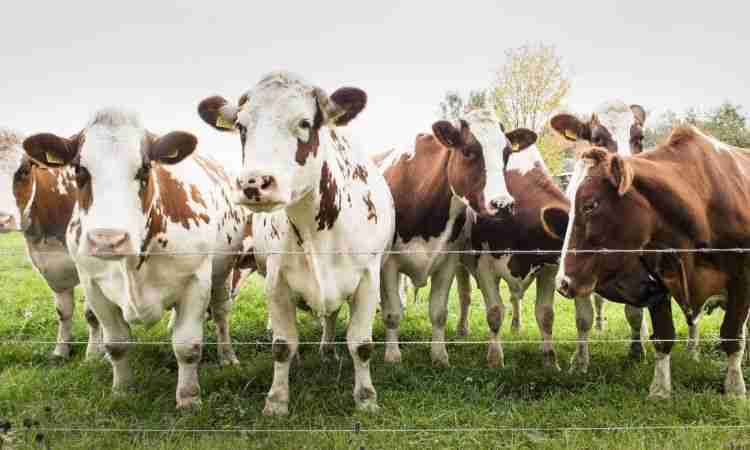
The Philippines Dairy Market size has been steadily growing, reaching approximately USD 3.22 billion in 2023. Projections suggest that this growth trajectory will continue, with the market expected to expand at a compound annual growth rate (CAGR) of 6.8% between 2024 and 2032, reaching a value of USD 5.84 billion by 2032. This significant growth underscores the increasing demand for dairy products in the country, driven by factors such as changing consumer preferences, rising disposable incomes, and government support for the agricultural sector. In this blog post, we will delve into the various factors driving the growth of dairy farming in the Philippines and explore the potential opportunities and challenges facing the industry.
Current State of the Dairy Industry
The dairy industry in the Philippines is characterized by a mix of smallholder and commercial dairy farms. While there are some large-scale commercial operations, the majority of dairy farms in the country are small-scale family-run enterprises. Despite efforts to increase domestic milk production, the Philippines still relies heavily on imports to meet its dairy requirements. According to data from the Philippine Statistics Authority (PSA), milk production in the country has been steadily increasing over the past decade, but it still falls short of meeting domestic demand.
Challenges Faced by the Dairy Sector
Despite the growth potential, the dairy sector in the Philippines faces several challenges that hinder its development. One of the major challenges is the limited availability of suitable land for dairy farming. The Philippines is a densely populated country with competing demands for land, making it difficult for dairy farmers to expand their operations. Additionally, the high cost of feed and inputs, as well as the lack of access to affordable credit, pose significant challenges to smallholder farmers.
Another challenge is the lack of cold chain infrastructure, which affects the quality and shelf life of dairy products. Without proper storage and transportation facilities, dairy products are susceptible to spoilage, leading to wastage and losses for farmers and processors alike. Furthermore, the dairy sector is vulnerable to external factors such as weather conditions and disease outbreaks, which can have a significant impact on milk production and supply.
Factors Contributing to Growth Potential
Despite these challenges, several factors contribute to the growth potential of the dairy industry in the Philippines. One of the key drivers of growth is the increasing consumer awareness and demand for dairy products. As incomes rise and lifestyles change, more Filipinos are incorporating dairy products into their diets, leading to greater demand for milk, cheese, yogurt, and other dairy products.
Government Support and Initiatives
The Philippine government has recognized the importance of the dairy industry and has implemented various initiatives to support its growth. These include providing subsidies and incentives for dairy farmers, promoting dairy farming as a viable livelihood option for rural communities, and investing in research and development to improve dairy production efficiency. Additionally, the government has implemented programs to enhance the skills and knowledge of dairy farmers through training and extension services.
Technological Advancements in Dairy Farming
Technological advancements have played a significant role in enhancing the productivity and efficiency of dairy farming in the Philippines. Modern farming practices such as the use of improved breeds, better feed management, and mechanization have helped increase milk production and reduce costs for dairy farmers. Additionally, advancements in genetics and breeding have led to the development of high-yielding dairy cattle breeds that are better adapted to the local environment.
Opportunities for Expansion
There are several opportunities for expanding dairy farming in the Philippines. One such opportunity lies in increasing domestic milk production to reduce reliance on imports. This can be achieved through the promotion of dairy farming as a viable livelihood option for rural communities and the adoption of modern farming practices such as improved feeding, breeding, and management techniques.
Another opportunity lies in the growing market for value-added dairy products. As consumer preferences evolve, there is a demand for dairy products such as cheese, yogurt, and ice cream. Filipino dairy farmers can capitalize on this trend by diversifying their product offerings and catering to these emerging market segments.
Export Potential
Furthermore, there is export potential for Philippine dairy products, particularly in neighboring countries in Southeast Asia. With the right marketing strategies and quality standards, Filipino dairy products can compete in the international market and contribute to the country’s economic growth. However, to fully capitalize on export opportunities, stakeholders need to address issues such as product quality, supply chain efficiency, and compliance with international standards and regulations.
Challenges and Solutions
To address the challenges faced by the dairy sector, stakeholders need to work together to implement sustainable solutions. This includes improving breeding practices to enhance milk yield, investing in cold chain infrastructure to reduce wastage, and providing training and support to dairy farmers to improve their skills and knowledge. Additionally, there is a need for greater collaboration between government, private sector, and civil society organizations to address systemic issues such as land tenure, access to finance, and market access.
Click here to checkout our other reports:- https://www.expertmarketresearch.com.au/